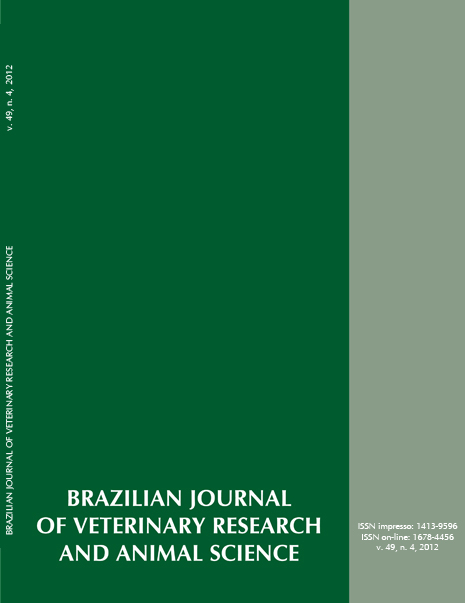Acid-base abnormalities in dogs with diabetic ketoacidosis: a prospective study of 60 cases
DOI:
https://doi.org/10.11606/issn.1678-4456.v49i4p325-332Keywords:
Endocrinology, Diabetes mellitus, Acid-base balance, Anion gapAbstract
Diabetic ketoacidosis (DKA) is considered a typical high anion gap metabolic acidosis due to the retention of ketoanions. The objective of this study was to describe the acid-base disturbances of dogs with DKA and further characterize them, according to their frequency, adequacy of the secondary physiologic response, and occurrence of mixed disturbances. Sixty dogs with DKA were enrolled in the study. Arterial blood pH and gas tensions, plasma electrolytes, serum b-hydroxybutyrate (b-OHB), glucose, albumin and urea concentrations were determined for all dogs included in the study. All dogs were evaluated individually and systematically by the traditional approach to the diagnosis of acid-base disorders. Most of the dogs had a high anion gap acidosis, with appropriated respiratory response (n = 18; 30%) or concurrent respiratory alkalosis (n = 14; 23%). Hyperchloremic acidosis with moderated to marked increases in b-OHB was observed in 18 dogs (30%) and 7 of these patients had concurrent respiratory alkalosis. Hyperchloremic acidosis with mild increase in b-OHB was observed in 6 dogs (10%). Four dogs (7%) had a high anion gap acidosis with mild increase in b-OHB and respiratory alkalosis. Most of dogs with DKA had a high anion gap acidosis, but mixed acid-base disorders were common, chiefly high anion gap acidosis and concurrent respiratory alkalosis, and hyperchloremic acidosis with moderated to marked increases in serum b-OHB.
Downloads
Downloads
Published
Issue
Section
License
The journal content is authorized under the Creative Commons BY-NC-SA license (summary of the license: https://





